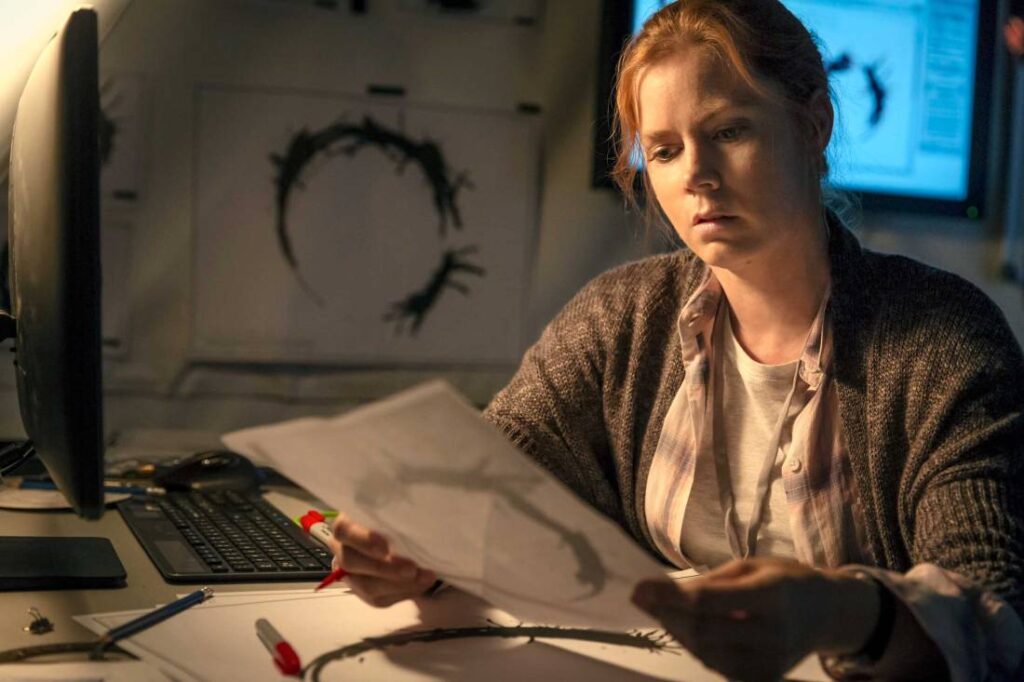Ever heard of Sapir–Whorf hypothesis? The hypothesis that is still debatable among researchers and has no conclusive evidence for its support. This very hypothesis has been the base for a short story, Story of Your Life, written by Ted Chiang and was published in 1998. The hypothesis suggests that the linguistic aspects have influence over cognitive behaviour. Linguistic determinism and linguistic relativity are the two corollaries of the same hypothesis. Linguistic determinism suggests that there is a strong influence over cognitive behaviour but the other suggests that it is only weakly connected with the cognitive behaviour. The movie, Arrival, explores the same idea in bits and pieces of memory flashes.
Louise Banks (played by Amy Adams) creates and recreates her own timeline with the flashes of memory. The movie begins in such a way that those memory flashes were evidently looking as flashbacks. The direction given by Denis Villeneuve takes it a step forward and reveals that the case is something very different. Those memory flashes were actually from the future and were inhereted by the character when the extra-terrestrials arrived and interacted with her. Denis Villeneuve chooses the side of linguistic determinism and portrays it beautifully till the very end.
The linguistic interpretation differs with culture and civilisation. The movie suggests that the use of the word ‘Weapon’ could be interpreted as ‘Tool’ by some civilisation and does not necessarily suggest an aspect of negativity. A language could be syntactically same but would semantically and pragmatically be very different. The whole aspect of language construction has been portrayed very well in the movie. The cognitive influence of the interaction between the people from two very different civilisation had resulted in the entire plot of the movie. The extra-terrestrials in the movie (referred to as hepta-pods) could use time non-linearly and had the same influence on the character, Louise Banks. Louise was able to construct her own timeline for the future but could only know it through memory flashes.
Joe Walker, the editor, has cleverly put some scenes in the beginning to confuse the audience with the actual timeline. The cinematography creates a surreal picture of the incidence. Bradford Young, the cinematographer, is known for his works on Selma (2014) and Pawn Sacrifice (2015).
The movie is a perfect example of how the art of communication could be broken down and understood in the form of science. In reality, every aspect of nature is science but we always fail to understand. Denis Villeneuve is an excellent director and I had only known him for Prisoners (2013) and Sicario (2015). His latest take on science fiction sets him apart and he definitely belongs to the cadre and stature of Christopher Nolan.
